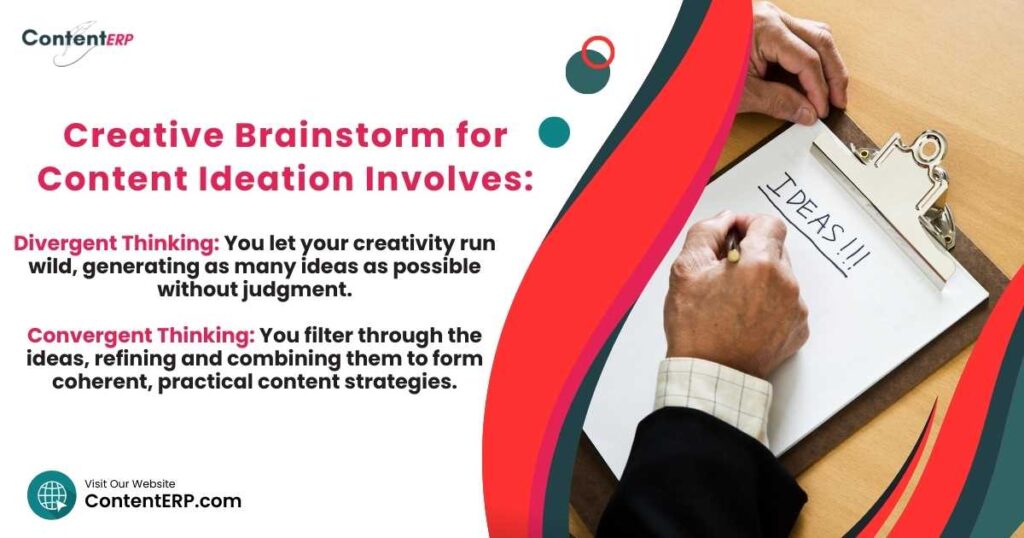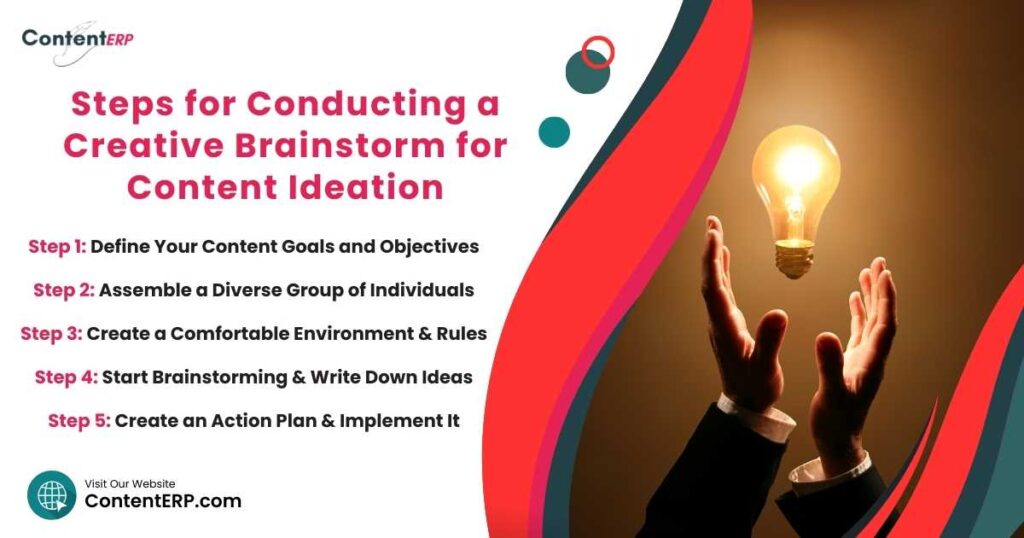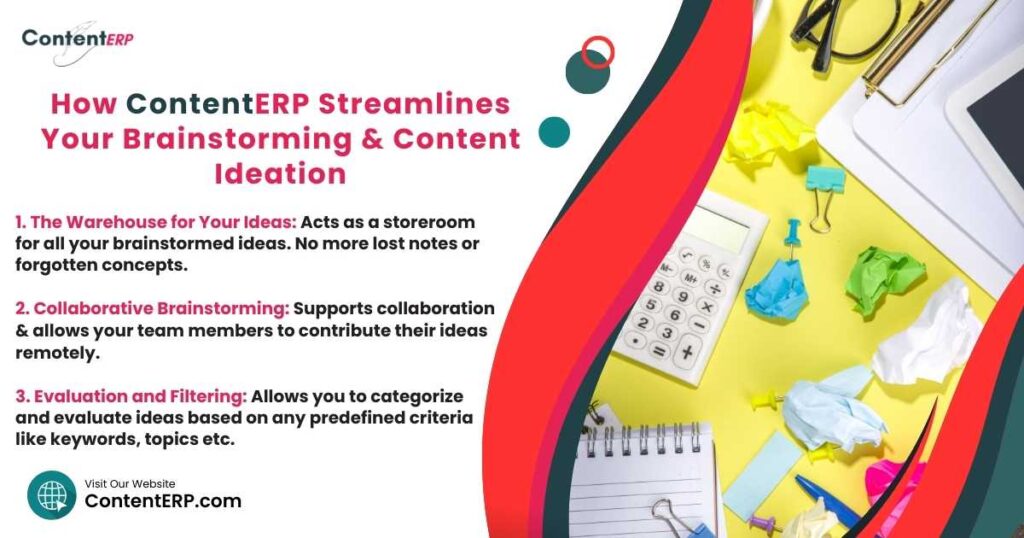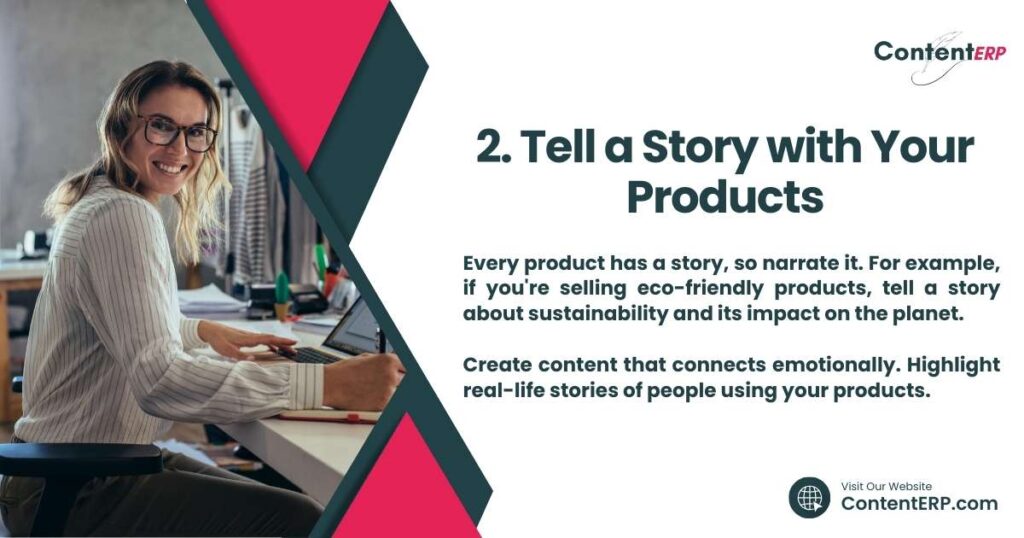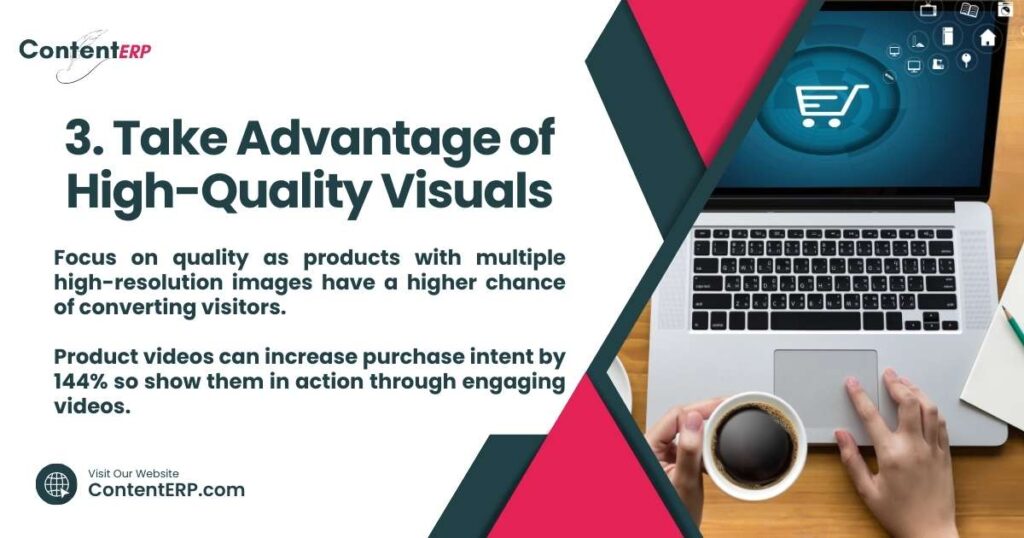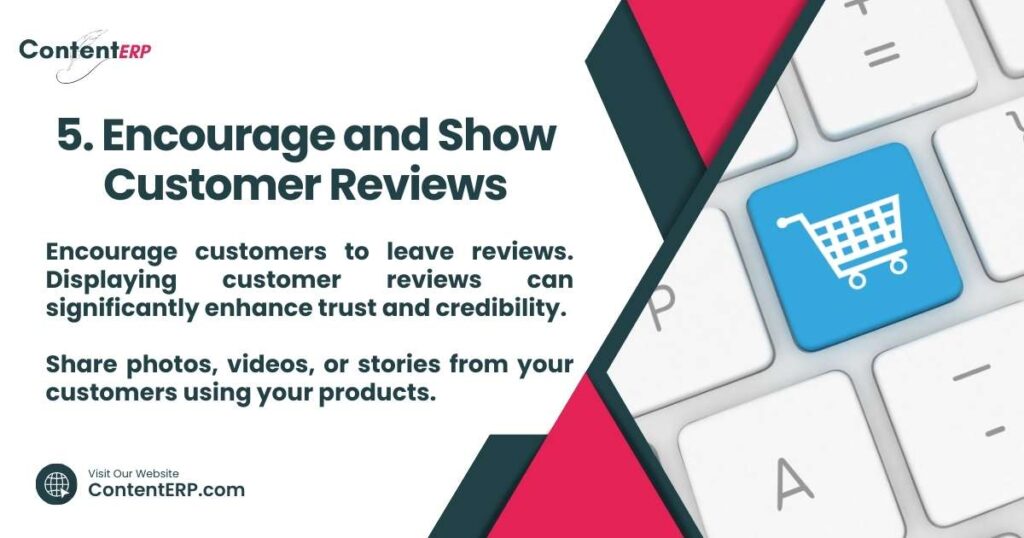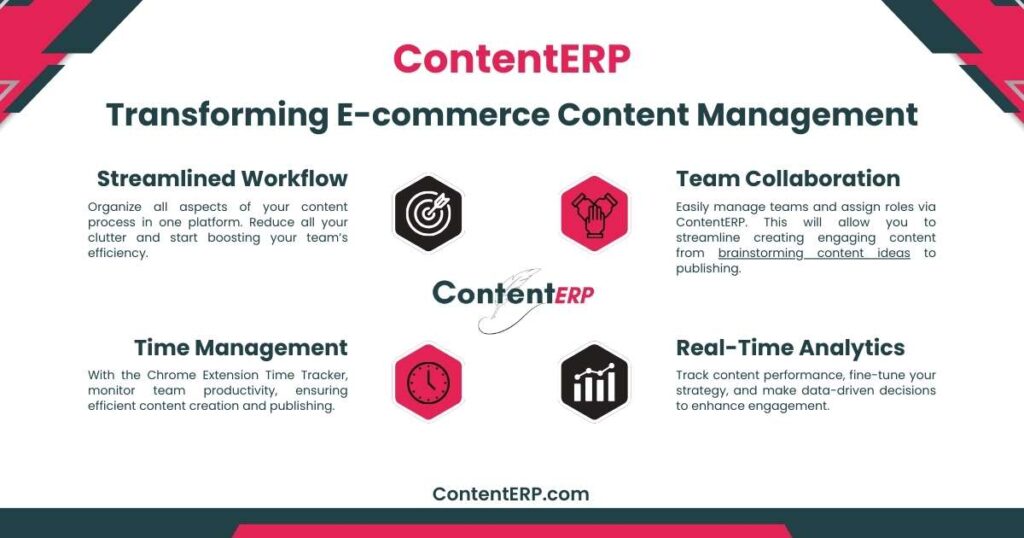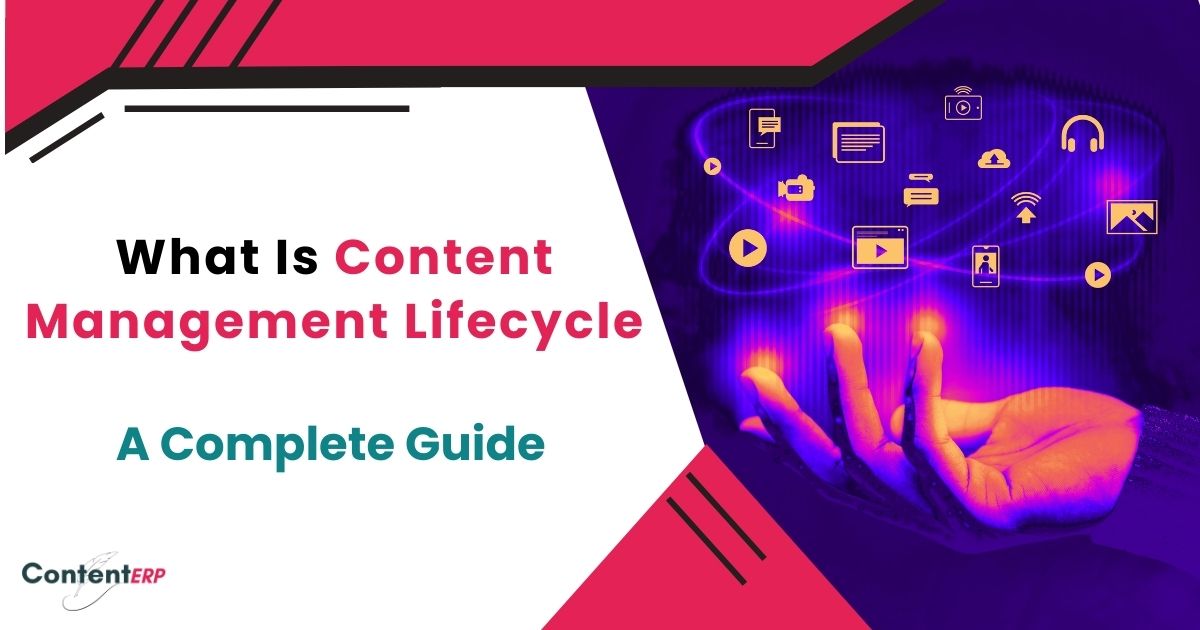
What Is the Content Management Lifecycle – Your Comprehensive New Guide
“Content is where I expect much of the real money will be made on the Internet,” Bill Gates once famously said, and his far-reaching statement holds truer today than ever before. But how would you make sure that this ‘king’ reigns supreme in the digital world? Well, just like these 44% marketers for whom good quality content management led to success, your final answer lies in mastering the content management lifecycle.
In our era, this ever-expanding digital era, every business NEEDS to have a strong presence on the internet in order to maintain its competitive edge and communicate with its intended audience. There is simple no other way. But to achieve that, just creating and sharing digital content isn’t enough, you know?
So in order to make sure that the content you are creating is really effective, businesses should have a content management strategy that covers all the different stages of the content lifecycle. That’s exactly where the content management lifecycle (CML) comes into play.
In this article, we’re going to dive deep into the different stages of the content management lifecycle. We’ll also explore how bloggers and niche website owners can use this method to create amazing, (no, breathtaking) digital content that really grabs the attention of their target audience.
But before we get started, let’s briefly revisit what content management lifecycle really means.
What Is “Content Management Lifecycle” – Here’s All You Need to Know
Content management lifecycle is basically a process that covers everything related to digital content like creating, publishing, maintaining, and archiving. So essentially, it involves coming up with a plan for your whole content creation journey: what kind of content to create, how to make sure it’s really good, then sharing it on different platforms, keeping it up to date, and archiving any old stuff that’s not needed anymore.
So the content management lifecycle process is super important for any business that wants to make a big impact online, establish themselves as an authority, and connect with their target audience.
It’s really important to understand each stage of the CML process if you want to create a content marketing strategy that actually gets results you can measure and eventually scale to your desired levels.
Now let’s dive into the different stages of the content management lifecycle while also exploring how businesses, especially the niche website owners and bloggers, can use this method to create awesome digital content that really grabs the attention of their target audience.
Understanding the Content Management Lifecycle – Step By Step
So, let’s talk about understanding content management. In its true sense, an efficient content management is the key to endless possibilities and becomes the backbone of a successful content strategy. It guides the content on its journey from the very beginning to its retirement.
It does not matter whether you’re just starting your journey as a content creator, or own a business, understanding this lifecycle is crucial. The process helps your content not only reach the right people but also make a lasting impact.
In the creative, hectic and fruitful journey of content management lifecycle, the very first step you take includes layout out a blueprint of what you want to do and how to do it.
1st Step of Content Management Lifecycle – Planning Stage
“By failing to prepare, you are preparing to fail,” Benjamin Franklin had wisely advised us all. And this is all especially true in the world of content creation. Think of the ‘Planning Stage’ as the moment you draw your treasure map on a piece of paper and mark the spots where the gold – your audience – can be found. It’s exciting, isn’t it? You’re not just planning; you’re going out on an adventure to discover what resonates with your audience.
- Identifying Your Objectives
- The Big Question – Why? You can begin by asking yourself some open-minded questions. What do I want to achieve with my content? Is it to captivate and grow an audience, to educate, or perhaps to drive a specific action like sales or sign-ups? Think of your goals as the stars that guide your content ship (especially through the waters of irrelevant goals).
- Making Goals SMART: You have to remember that any unclear goals are like shooting arrows in the dark. So let’s get SMART with our goals – be Specific, Measurable, Achievable, Relevant, and Time-bound. Let’s give you an example. Instead of blindly aiming to ‘grow the audience,’ how about we target ‘increasing blog traffic by 30% in the next six months’?
That would be a specific goal that is now set to be achieved within a time-frame. No random guesses or directions for your next move in the content management lifecycle. So set goals that guide and motivate you as well.
- Getting to Know Your Audience
- Creating Conversations, Not Just Content: For a moment, take your time and imagine your ideal reader. Who are you talking to? What are their hobbies? Challenges? Desires? This is what help you create conversations instead of just content. Understand your audience at this level so that you can create a targeted content that speaks directly only to them.
- Data is Your Friend: Tools are your best friends in the digital world. They act like milestones to show you the correct path. So use tools like Google Analytics, social media insights, and surveys to understand the behaviors and preferences of your target audience.
- Creating Conversations, Not Just Content: For a moment, take your time and imagine your ideal reader. Who are you talking to? What are their hobbies? Challenges? Desires? This is what help you create conversations instead of just content. Understand your audience at this level so that you can create a targeted content that speaks directly only to them.
This is like having a coffee chat with your friend while they tell you about their preferences. The better you know your audience, the better you can know about their needs and interests.
- Content Mapping
- Aligning Content with Goals and Audience: Keep the whole journey in your mind while doing this. You see, every piece of content should be like a puzzle piece that fits into the bigger picture. Does your blog post align with your goal to educate? Does this video you are going to upload match your audience’s love for DIY tips?
- Spotting the Gaps: Have you ever looked at your content and felt like something’s missing? Right, you do know the feeling. That’s exactly where the content gap analysis comes in. Maybe you’ve covered the ‘how-tos’ but not the ‘why-tos’. So get on with finding and then filling these gaps to provide a fuller and richer experience for your audience in your content management lifecycle.
- Aligning Content with Goals and Audience: Keep the whole journey in your mind while doing this. You see, every piece of content should be like a puzzle piece that fits into the bigger picture. Does your blog post align with your goal to educate? Does this video you are going to upload match your audience’s love for DIY tips?
- Tools and Techniques for Seamless Planning
- Brainstorming – The Fun Part: Here’s our idea: grab your team, a whiteboard, some sticky notes, and let the ideas flow. You need to have an impactful and creative brainstorm for content ideation. Just remember one thing that in brainstorming, there are no bad ideas. Sometimes the craziest idea can lead to a content goldmine.
- Learn from the Competition: Look at your competitors and their stats right away. Do you know what’s working for them? What’s not? Hence, analyze your competitors to get as many insights as you can. That will help you improve your own strategy.
- Brainstorming – The Fun Part: Here’s our idea: grab your team, a whiteboard, some sticky notes, and let the ideas flow. You need to have an impactful and creative brainstorm for content ideation. Just remember one thing that in brainstorming, there are no bad ideas. Sometimes the craziest idea can lead to a content goldmine.
- Be Flexible in Your Planning
- Plan, but Be Prepared to Improvise: One thing is constant: the change in digital world. So what works today might not work tomorrow. Hence, keep your plans flexible and be ready to adapt to new trends, technologies, and audience behaviors.
- The Iterative Approach: Think of your plan as a living document. It evolves and grows just like your content. If you want to stay relevant and effective, regular reviews and revisions are key to that all.
- Plan, but Be Prepared to Improvise: One thing is constant: the change in digital world. So what works today might not work tomorrow. Hence, keep your plans flexible and be ready to adapt to new trends, technologies, and audience behaviors.
The planning stage is the starting line of your content management lifecycle’s marathon. You wouldn’t start running without knowing the route, would you? Similarly, diving directly into content creation without a solid plan is like running blind without a path. A good, solid plan sets the pace for the rest of your content lifecycle and makes sure that each piece of content you create has a purpose.
So have you planned your content management journey now? Alright, grab your gear and let’s move on to the next stage: content creation.
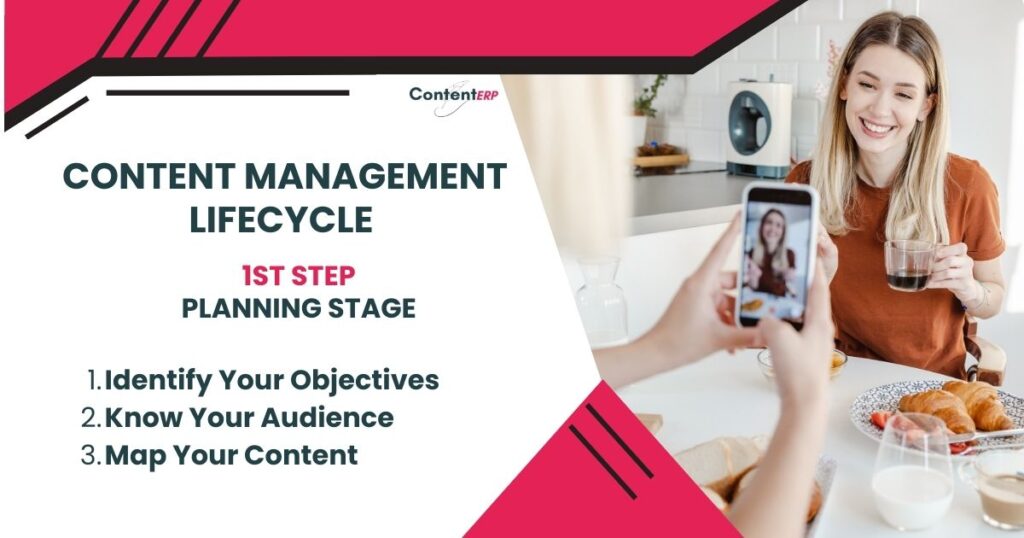
2nd Step of Content Management Lifecycle – Content Creation Stage
“Great content is the best sales tool in the world,” said Marcus Sheridan, and he’s spot on. The content creation stage is the time when your planning takes a true form. It’s the stage where ideas become words, words become stories, and stories become connections.
But remember, great content doesn’t just happen. Instead, it’s always crafted – carefully.
- Bringing Ideas to Life
- Creativity Meets Strategy: Each piece of content you are going to create should be a perfect mixture of good creativity and insights. Are you telling a story? Does it attract your audience and matches your goals? Ask yourself these questions when you are brining your ideas to life.
- Use Diverse Formats: Blogs, videos, podcasts, infographics – the digital world is your all yours to choose from. Mix and match all these different formats in your content management lifecycle to keep your audience happy, engaged and to satisfy any different preferences.
- Creativity Meets Strategy: Each piece of content you are going to create should be a perfect mixture of good creativity and insights. Are you telling a story? Does it attract your audience and matches your goals? Ask yourself these questions when you are brining your ideas to life.
- The Power of Words and Visuals
- Come Up With Attractive Narratives: Every sentence you write should hook the reader further. Are your words painting a picture, arousing the emotions of your audience, or increasing their curiosity? The answer should be – a resounding “YES”.
- Visuals as Storytellers: A picture is worth a thousand words, they say. And they are not wrong. How are your visuals adding to your story? How are they even enhancing it? Are they on-brand and eye-catching?
- Come Up With Attractive Narratives: Every sentence you write should hook the reader further. Are your words painting a picture, arousing the emotions of your audience, or increasing their curiosity? The answer should be – a resounding “YES”.
- Staying True to Your Voice
- Brand Consistency: Your content should sound like it’s coming from an old friend. But wait – you have to ensure it stays consistent. So, is your tone actually consistent across all pieces in your content management lifecycle? Does it reflect your brand’s true personality?
- Authenticity is Key: Authenticity builds trust. Are you being true to your brand and true to your audience? The answer here should be “yes”.
- Brand Consistency: Your content should sound like it’s coming from an old friend. But wait – you have to ensure it stays consistent. So, is your tone actually consistent across all pieces in your content management lifecycle? Does it reflect your brand’s true personality?
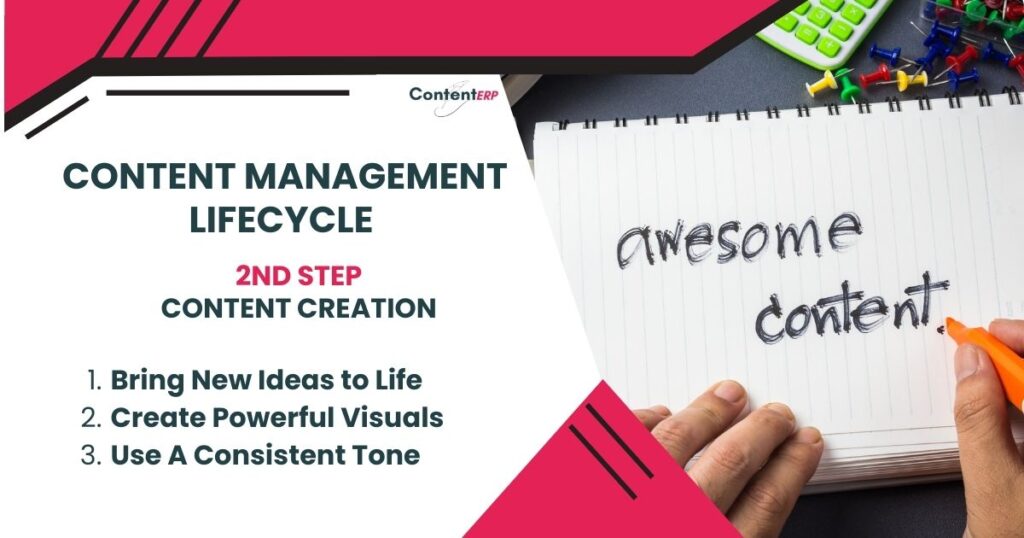
3rd Step of Content Management Lifecycle – Quality Control Stage
“Quality is never an accident; it is always the result of intelligent effort,” John Ruskin said a long time ago. And how right he was, when even now, quality reigns supreme way above quantity.
In your content management lifecycle journey, the content creation stage doesn’t end when you have written the last word is written or selected the final image. They say that the devil is in the details so it only and truly ends when your content has been polished like crazy to shine like a diamond.
- Editing and Proofreading
- Grammar and Clarity: Have your checked your content? Is it free from errors and easy to understand? A second pair of eyes, no matter human or digital (like Grammarly), can prove to be invaluable while assisting you to edit and proofread.
- Tone and Style Checks: Does the content maintain your brand’s voice throughout your content? Remember that the consistency in style and tone is extremely crucial for your brand’s ultimate recognition.
- Grammar and Clarity: Have your checked your content? Is it free from errors and easy to understand? A second pair of eyes, no matter human or digital (like Grammarly), can prove to be invaluable while assisting you to edit and proofread.
- Compliance and Fact-Checking
- Factual Accuracy: This digital era is also a lot about fake news so fact-checking your content is non-negotiable. Have you made sure that your facts are straight and your sources/references are credible enough?
- Legal and Ethical Compliance: This is especially crucial if you belong to an industry that is regulated heavily. Your content management lifecycle should include playing by the rules.
- Factual Accuracy: This digital era is also a lot about fake news so fact-checking your content is non-negotiable. Have you made sure that your facts are straight and your sources/references are credible enough?
- Feedback Is the Secret Sauce
- Constructive Criticism: Don’t turn away from any kind of constructive criticism in your content management lifecycle. It’s the cauldron in which your good content melts to become great.
- Test Runs: If possible, test your content on a sample of your audience. Like we do an A/B testing in marketing. What’s their reaction? What can be improved? Need more ideas? Turn to a creative and efficient brainstorming for help.
- Constructive Criticism: Don’t turn away from any kind of constructive criticism in your content management lifecycle. It’s the cauldron in which your good content melts to become great.
The content creation process pushes you to focus on creating a delicate balance between creativity and strategy, between storytelling and selling.
Remember, every piece of content you create in your content management lifecycle is a reflection of your brand, and like a chapter in your digital story. So make it count.
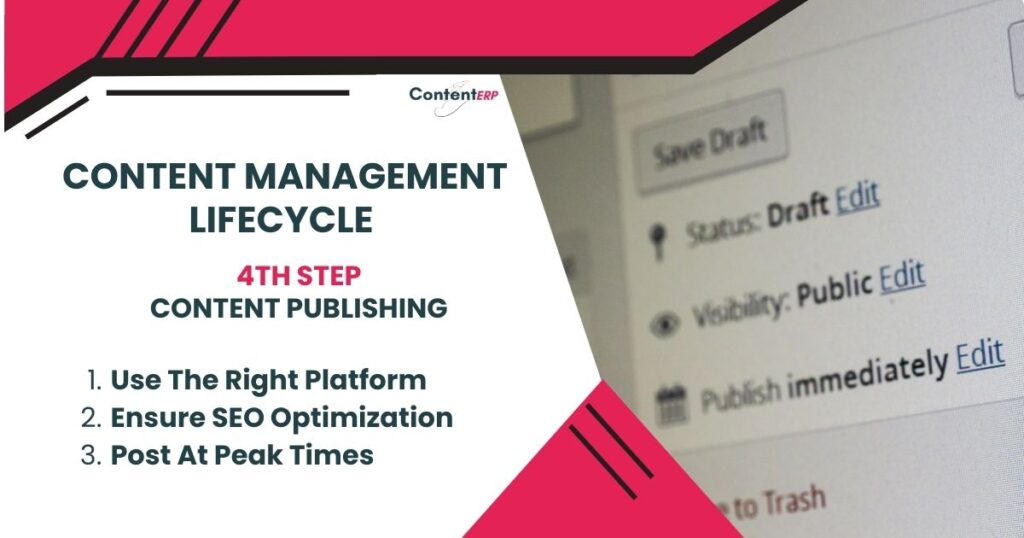
4th Step of Content Management Lifecycle – Content Publishing Stage
“Content is king, but distribution is queen and she wears the pants.” We are still laughing at this quote by Jonathan Perelman. But in the real world, his words are especially true in the content publishing stage.
Creating great content is not as much of an effort as it takes to ensure that it reaches the right eyes and ears at the right time.
- Choosing the Right Platform
- Understanding Your Platforms: Each platform has its unique audience and style. Have you chosen the perfect platform to upload your content where your audience spends most of their time?
- Cross-Platform Strategies: Don’t put all your eggs in one basket in your content management lifecycle. So how exactly are you using all those different platforms out there to increase your reach and engagement as much as you can?
- Understanding Your Platforms: Each platform has its unique audience and style. Have you chosen the perfect platform to upload your content where your audience spends most of their time?
- SEO Optimization
- Keywords and SEO Best Practices: Are you integrating the right keywords and following the best SEO practices? That is what will make sure that your content is easily discoverable. Takes time, but is still the best way.
- Meta Descriptions, Tags, and Titles: These are the first things your audience will see in search results. Have you made sure that they are catchy, clear, and SEO-friendly?
- Keywords and SEO Best Practices: Are you integrating the right keywords and following the best SEO practices? That is what will make sure that your content is easily discoverable. Takes time, but is still the best way.
- Timing is everything
- Understanding Peak Times: When is your audience most active online? Time your content release schedule perfectly so you can have its significantly impact on your audience after uploading.
- Consistency in Publishing: Are you maintaining a good, clear and consistent publishing schedule in your content management lifecycle? Regularity will help you build the anticipation and increase the loyalty of your audience.
- Understanding Peak Times: When is your audience most active online? Time your content release schedule perfectly so you can have its significantly impact on your audience after uploading.
- Tools to Aid in Publishing
- Content Management Systems (CMS): A good CMS can simplify your publishing process, making it way more efficient and error-free than publishing it any other ways.
- Social Media Schedulers: Tools like Buffer or Hootsuite enable you to schedule collective posts across different platforms. That will help you schedule your publishing times perfectly.
- Content Management Systems (CMS): A good CMS can simplify your publishing process, making it way more efficient and error-free than publishing it any other ways.
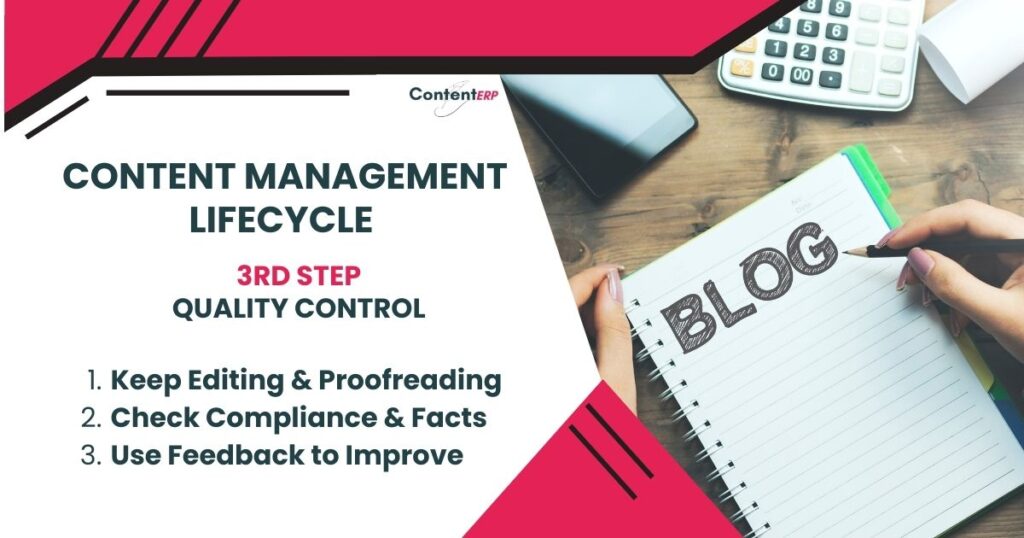
5th Step of Content Management Lifecycle – Content Maintenance Stage
Content is like a garden. If you don’t tend to it, you can’t expect a good harvest. This analogy perfectly highlights the importance of regular content updating process. The content maintenance stage is when you try to grow and refresh your content.
It is a crucial aspect of your content management lifecycle and is done to make sure that it continues to engage and attract your audience over time.
- Regular Updates and Relevancy Checks
- Staying Up-to-Date: Is your content still accurate and relevant in the current circumstances? Have you checked it all? Note that if you are updating statistics, facts, or references in your content regularly, it can breathe new life into older content, especially for Google.
- Refreshing for Relevancy: Trends change, and hence, so do the preferences of your target audience. What are you doing to update your content and keep it in line with current trends and interests?
- Staying Up-to-Date: Is your content still accurate and relevant in the current circumstances? Have you checked it all? Note that if you are updating statistics, facts, or references in your content regularly, it can breathe new life into older content, especially for Google.
- Balancing Evergreen and Time-Sensitive Content
- Evergreen Content: This is your content’s ultimate backbone – remaining relevant over time. Are you doing anything to periodically review and refresh it to maintain its evergreen status?
- Time-Sensitive Updates: For content in your content management lifecycle that is directly related to any specific events or trends, timely updates are extremely, immensely crucial. Are you keeping track of such content for necessary revisions or removals?
- Evergreen Content: This is your content’s ultimate backbone – remaining relevant over time. Are you doing anything to periodically review and refresh it to maintain its evergreen status?
- SEO Tune-ups
- SEO Health Checks: Regular SEO reviews can help you a lot in your content journey and make sure that your content continues to perform well in search rankings. Are you optimizing older content with the current best practices in SEO?
- Keyword Refresh: As search trends change, so should your keywords, right. Are you updating your content’s keywords to reflect all those current search behaviors?
- SEO Health Checks: Regular SEO reviews can help you a lot in your content journey and make sure that your content continues to perform well in search rankings. Are you optimizing older content with the current best practices in SEO?
- Tools for Effective Maintenance
- Content Audit Tools: Tools like SEMrush or Ahrefs can help identify content that needs updating or re-optimization.
- Content Management Systems (CMS): A good CMS can alert you to content that hasn’t been updated in a while. That will make its maintenance easily manageable and periodic.
- Content Audit Tools: Tools like SEMrush or Ahrefs can help identify content that needs updating or re-optimization.

6th Step of Content Management Lifecycle – Content Reviewing Stage
Always, and I mean, always review what you’ve written because it’s your map to future improvement. In the reviewing content stage, you take a step back to evaluate the performance and impact of your content. This helps in learning from successes and mistakes in your content management lifecycle.
- Performance Analysis: Beyond the Surface
- Quantitative Analysis: Look at the numbers – always keep an eye. How many views, shares, likes? But go deeper – what does this tell you about your audience’s preferences and behaviors?
- Qualitative Insights: Numbers don’t tell the whole story. What can you learn from the comments and direct feedback from your audience?
- Quantitative Analysis: Look at the numbers – always keep an eye. How many views, shares, likes? But go deeper – what does this tell you about your audience’s preferences and behaviors?
- Incorporating Audience Feedback
- Direct from the Audience’s Mouth: Your audience is the one true source of all your insights. Are you actively looking at them and using their feedback into your content management lifecycle?
- Community Engagement: Engaging with your community can provide a lot of very important insights and tell you what your audience actually values in your content.
- Direct from the Audience’s Mouth: Your audience is the one true source of all your insights. Are you actively looking at them and using their feedback into your content management lifecycle?
- Adapting to Trends and Preferences
- Trend Analysis: Are you keeping an eye on the upcoming, newer trends in your industry? How can you adjust these trends to your content strategy?
- Preference Evolution: As your audience grows and evolves, so should your content. Are you attuned to these changes in preferences and expectations?
- Trend Analysis: Are you keeping an eye on the upcoming, newer trends in your industry? How can you adjust these trends to your content strategy?
Reviewing content is not a one-time activity, mind you. It’s a continuous cycle of learning, adapting, and growing. You have to regularly review your content. And by doing this in your content management lifecycle, you get to know about the insights you need to enhance your strategy.
Hence, this ensures that your content remains thoroughly relevant and engaging all the time.

7th Step of Content Management Lifecycle – Content Archiving Stage
Archiving is something that defines your content’s history. It decides what to preserve for the future and what to let go. This stage ensures that all of your content collection remains relevant and valuable.
- Deciding What to Archive
- Relevance and Performance: Is the content still relevant? Did it perform well? Content that has historical significance or performed exceptionally well can be archived for future reference.
- Outdated or Underperforming Content: Content that is outdated or did not match what your audience wanted to see might be better off archived. This will vacate your content space a lot.
- Relevance and Performance: Is the content still relevant? Did it perform well? Content that has historical significance or performed exceptionally well can be archived for future reference.
- The Process of Archiving
- Organized and Accessible: Archiving is not like you are throwing away content like a waste into a digital vault without giving it a path to restore. You have to organize any archived content for easy retrieval before you shove it aside in its content management lifecycle.
- Digital Preservation: Make sure that your content is stored in formats that will not become obsolete anytime soon. This will help you to keep it accessible for many years to come.
- Organized and Accessible: Archiving is not like you are throwing away content like a waste into a digital vault without giving it a path to restore. You have to organize any archived content for easy retrieval before you shove it aside in its content management lifecycle.
- Strategic Archiving
- Policy and Procedure: Establish some clear cut policies for your content on what gets archived and when. Regular reviews can help decide if content should remain active, be updated, or archived.
- Legal and Compliance Considerations: In certain industries, archiving content is not just a strategic choice but a legal requirement. Are you sure you are complying with that industry’s standards and regulations?
- Policy and Procedure: Establish some clear cut policies for your content on what gets archived and when. Regular reviews can help decide if content should remain active, be updated, or archived.
Benefits of Archiving Content
Well, the benefits of archiving content are more often than not excessively underestimated in the content management lifecycle. Proper archiving can transform your content from a static collection into a dynamic resource.
- Reference and Insights
- Learn from the Past: Your archived content is going to be a history book of your brand’s journey. What worked? What didn’t? This insight is something invaluable for future content planning in the coming years.
- Benchmark Your Progress: By looking back at where you’ve been, you can measure how far you’ve come. This can be a powerful tool to help understand your growth and evolution.
- Learn from the Past: Your archived content is going to be a history book of your brand’s journey. What worked? What didn’t? This insight is something invaluable for future content planning in the coming years.
- SEO Opportunities
- Old to Gold: Sometimes, an old piece of content can be updated and you can rewrite it in a minor way to rank well in current SEO environment. Are you reviewing your archives for such opportunities?
- Link Building Resource: Archived content can be a resource for internal linking as this will help in boosting the SEO of your newer content.
- Old to Gold: Sometimes, an old piece of content can be updated and you can rewrite it in a minor way to rank well in current SEO environment. Are you reviewing your archives for such opportunities?
- Content Repurposing
- Breathing New Life into Old Content: Can a blog post be turned into a video script? Can data from an old report be used for an infographic? The possibilities for using your old content again are simply endless.
- Cost-Efficiency: Repurposing content is very cost-effective. You’re increasing the value of the content you’ve already created. And this would further reduce the need for constant new content creation.
- Breathing New Life into Old Content: Can a blog post be turned into a video script? Can data from an old report be used for an infographic? The possibilities for using your old content again are simply endless.
So there you have it – all about managing the content in a very effective and manageable way to help you gain the most out of everything that you create.
Now that you know how to handle your content over a lifetime, we’ve got some even better news for you next; here’s how our revolutionary software ContentERP will help you in your content management lifecycle for niche websites and bloggers.

Integrating ContentERP into the Content Management Lifecycle
ContentERP is our game-changer software in the world of niche website management that offers you a comprehensive solution by streamlining every phase of the content management lifecycle.
Here’s how ContentERP seamlessly integrates into each stage, transforming the way you manage your content, team, and business.
- Planning Stage
It’s about time to say goodbye to juggling multiple spreadsheets and apps. ContentERP brings your entire content process into one place, making planning simpler and more efficient.
With built-in keyword research tools, ContentERP ensures that your content is not only well-planned but also SEO-optimized right from the start.
- Content Creation Stage
From brainstorming to publishing, ContentERP manages the entire content production process. It simplifies tracking your content ideas and the progress of articles in real-time.
What’s more you can easily build and manage teams within ContentERP. Assign roles to content managers and creators, ensuring a smooth creation process tailored to your site’s needs.
- Quality Control
ContentERP’s unique ‘Queue’ system ensures a steady flow of content assignments, minimizing confusion and enhancing the quality of output.
With real time monitoring, you can also keep a close eye on the content production process, ensuring consistent quality and adherence to your niche site’s standards.
- Content Publishing Stage
Whether managing one site or several, ContentERP’s centralized site management platform simplifies the publishing process, ensuring a consistent and timely content rollout across all your niche sites.
- Monitoring Content Stage
With ContentERP, you can track the time taken by writers for each article, along with team performance metrics. This data is invaluable for refining your content strategy and ensuring maximum efficiency.
- Content Maintenance Stage
The platform provides a bird’s-eye view of all your content, making it easier to identify pieces that require updates or maintenance.
- Reviewing Content
Keep track of your financials directly within ContentERP. This feature helps in evaluating the ROI of your content and making informed decisions for future content investments.
- Content Archiving Stage
With ContentERP, archiving and retrieving old content becomes straightforward, ensuring that your valuable content remains accessible for future reference or repurposing.

Conclusion
To conclude it all, understanding the content management lifecycle is extremely crucial and essential skill for you as a high-impact content creator or manager. Each stage, from the planning to the final archiving, plays its role to make sure your brand reaches your audience in a comprehensive way and engages them productively.
You have to master the content management lifecycle to make sure that your content keeps on growing in the digital world and leaves a very long lasting impact.
And to help you in your journey, ContentERP creates the best ecosystem for your niche site content management. It takes all the chaos out of content creation and makes it a streamlined, efficient process.
Join the waiting list for ContentERP and be the first to experience the future of content management. Say goodbye to all the hassles of content writing and welcome the efficiency and clarity that ContentERP brings to your content production process.





